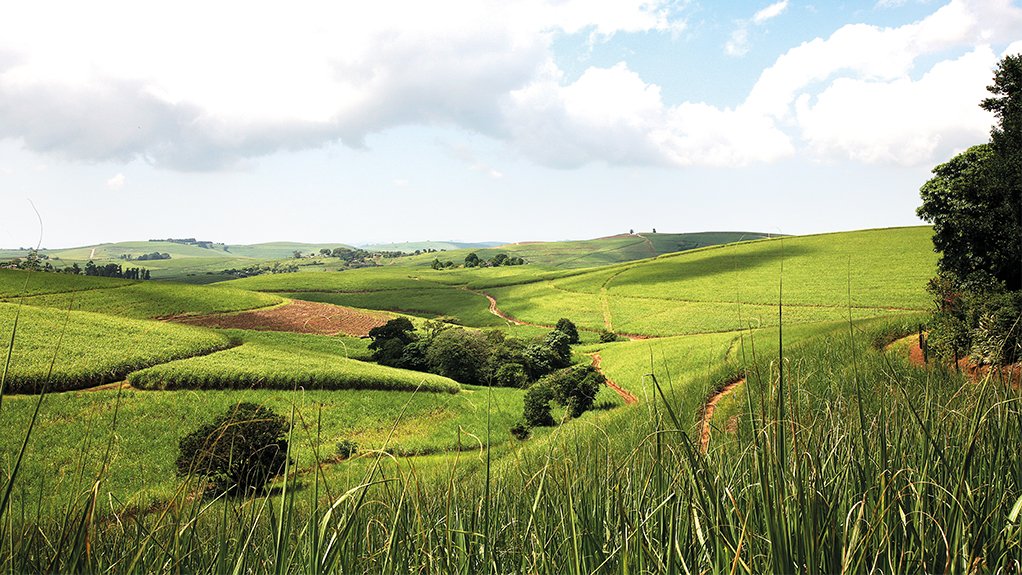Following the announcement that there will be no tax increase for the sugar industry in the 2023/24 and 2024/25 financial years, announced by Finance Minister Enoch Godongwana during his 2023 Budget speech, industry body the South African Sugar Association (SASA) has been able to investigate and draft diversification opportunities to ensure the sustainability of the sector.
Such opportunities include sustainable aviation fuel, bioethanol for fuel blending, food additives and bioplastics.
The need to diversify and restructure is aimed at ensuring the continued existence, growth and sustainability of the industry, which has continued to face serious challenges over the years.
SASA executive director Trix Trikam says most projects are still at the scoping, market analysis or prefeasibility stages, with the Department of Science and Innovation and the Industrial Development Corporation (IDC) providing some financial support.
The sugar industry is in recovery mode, which is attributable to the Sugarcane Value Chain Master Plan 2030 that was signed in November 2020, he notes.
However, the industry is not out of the doldrums yet, as serious challenges, which threaten the sector’s continued existence and sustainability, still exist.
In the previous season, industry players have faced significant increases in key cost drivers, such as fertiliser chemicals, fuel and energy, which are largely driven by the development in world markets, including the Russian-Ukraine conflict, adds Trikam.
One of the apex priorities of the Master Plan is to create clearly defined diversified solutions to ensure the sustainability of the industry.
Trikam explains that Task Team 6 of the Master Plan has been mandated to ensure that diversification is pursued by thoroughly considering and investigating opportunities in this sphere.
Moreover, he says the sugar industry can be one of the top contributors to advancing the goals outlined in the National Bioeconomy Strategy.
As a flex crop, sugar cane can produce additional products – other than sugar – which are “greener”, contributing to less dependence on fossil fuels and reduced greenhouse-gas emissions.
He cites the example of fibre waste – known as bagasse, after the sugar juice has been extracted – which can be used for bioenergy applications, such as electricity generation, or converted into animal feed.
The first- and second-generation bioethanol from sugar juice and bagasse respectively can also be used to produce sustainable fuels, bioplastics and “green” chemicals, notes Trikam.
The survival of South Africa's sugarcane industry is, therefore, crucial if SASA is to compete in these growing markets and support the region’s emissions-reduction goals, he adds.
Further, Trikam says government must ensure that a conducive policy and legislative framework are in place to allow for the implementation of these diversifications, as well as sufficient subsidies to get projects off the ground and incentives to reward capital investment.
The industry is working with key government stakeholders, such as the IDC; the Department of Trade, Industry and Competition; and the Council for Scientific and Industrial Research, to finalise the plans that will outline the exact nature of the support.
The collaboration between the industry and government is of paramount importance if SASA is to have a thriving and revitalised industry, says Trikam.
“This no tax increase will give the industry breathing space to vigorously pursue diversification efforts.”
He points out that the main revenue stream for the sugar industry comes from the consumption of sugar; however, as consumption has been decreasing since the implementation of the Health Promotion Levy, the industry needs to consider other income streams for sugar cane to ensure the survival and growth of the sector, which is critical to the livelihoods of those who depend on it.
“Hence, the focus of the Master Plan is producing a sugarcane-based industry.”
The industry is crucial to the economies of KwaZulu-Natal and Mpumalanga, as it operates in deeply rural and job-starved regions of the two provinces, he adds.
The industry creates 65 000 direct and 270 000 indirect jobs and at least one-million people depend on the sugar cane growing and milling activities of the industry, Trikam concludes.
Edited by: Zandile Mavuso
Creamer Media Senior Deputy Editor: Features
EMAIL THIS ARTICLE SAVE THIS ARTICLE
ARTICLE ENQUIRY
To subscribe email subscriptions@creamermedia.co.za or click here
To advertise email advertising@creamermedia.co.za or click here















